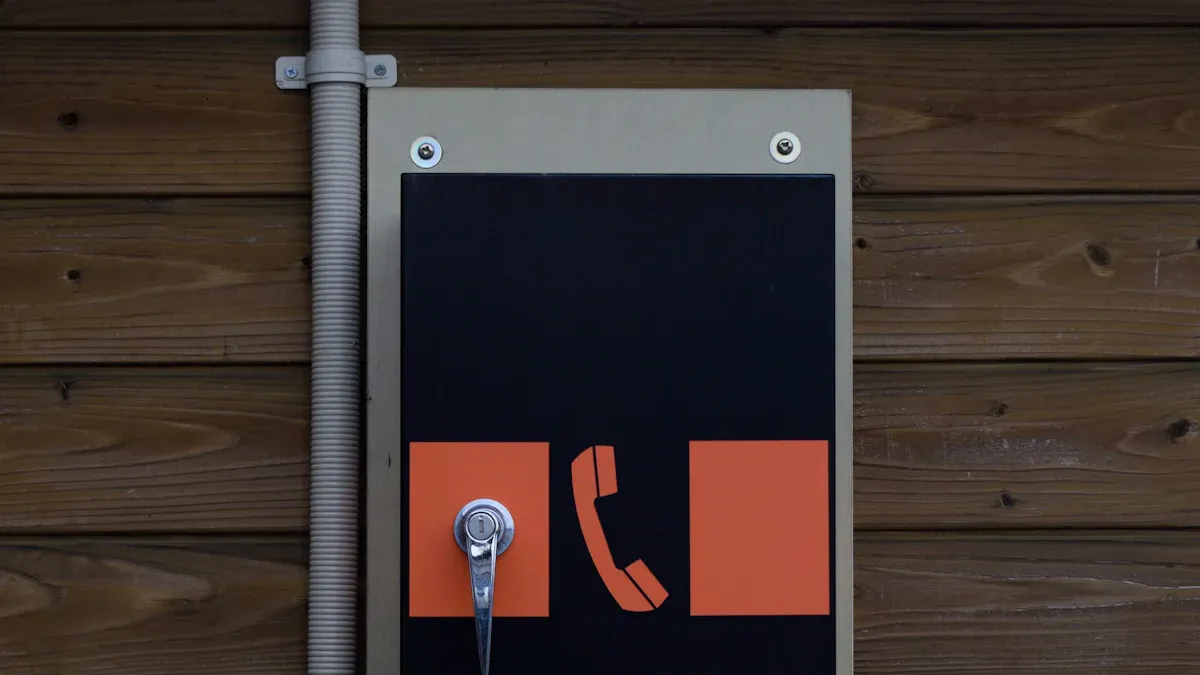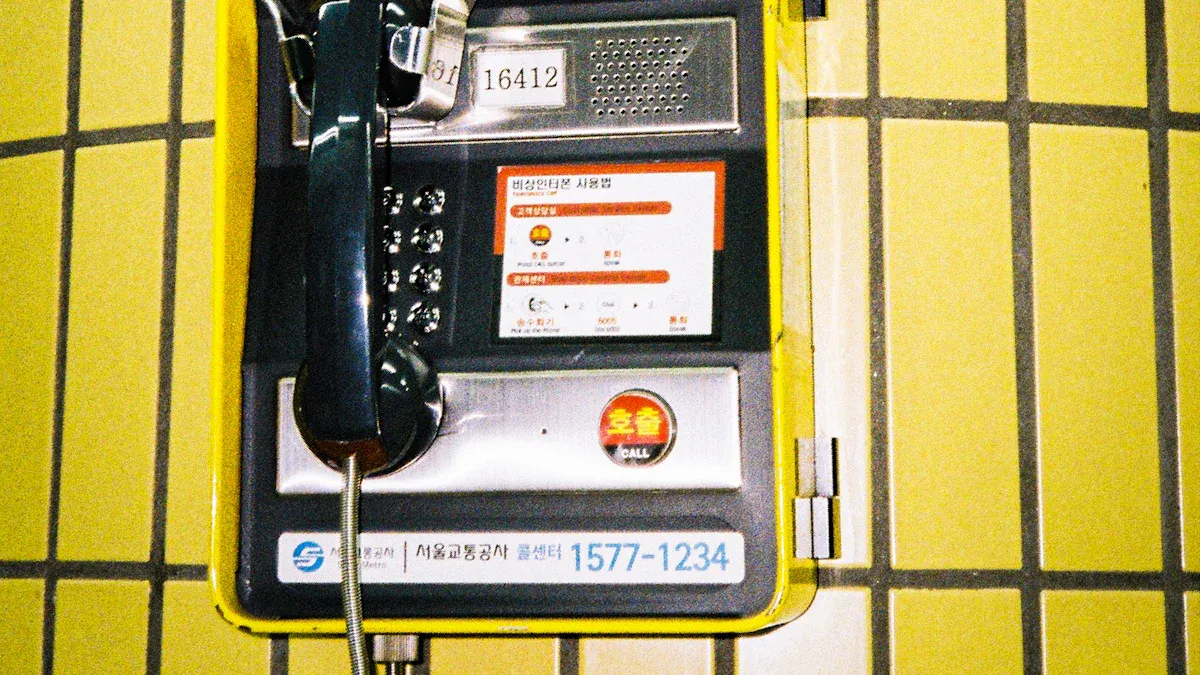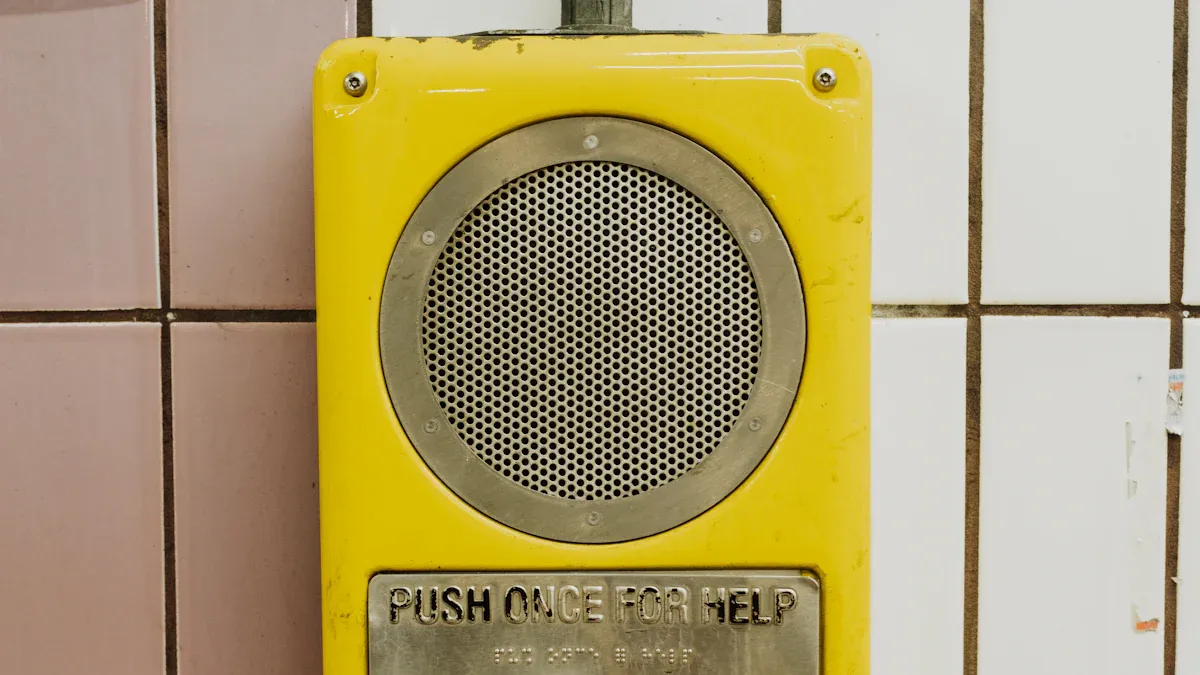
Tunnels can get loud and damp, making clear communication tough. A Highway Hands Free Backlit Waterproof Moisture Proof Speakerphone Emergency Intercom steps in as a reliable auto dial emergency telephone. This rugged emergency telephone works as a traffic emergency Telephone, letting anyone call for help fast, even when conditions turn rough.
Why Choose a Highway Hands Free Backlit Waterproof Moisture Proof Speakerphone Emergency Intercom for Tunnel Safety

Addressing Tunnel Safety Challenges with Reliable Communication
Tunnels can be tricky places. They often block regular phone signals, making it hard for people to call for help. A Highway Hands Free Backlit Waterproof Moisture Proof Speakerphone Emergency Intercom solves this problem. It gives everyone inside the tunnel a way to reach emergency teams fast. Reliable communication systems like this one help keep workers and drivers safe. In many tunnels, teams use special communication hubs and fiber optic cables to send data every 15 minutes. This setup lets people monitor tunnel safety from a distance, so crews do not have to stay in dangerous spots. Real-time updates help everyone know if the tunnel is safe.
Essential Features for Tunnel Environments
The Highway Hands Free Backlit Waterproof Moisture Proof Speakerphone Emergency Intercom comes packed with features made for tough tunnel conditions. Its waterproof and dustproof housing stands up to moisture and dirt. The strong steel body resists damage from bumps or vandalism. The loud ringer and clear speaker make sure calls get heard, even when traffic noise is loud. The device works in extreme temperatures and high humidity, so it keeps working no matter the weather.
Advantages of Hands-Free and Backlit Operation
Hands-free operation means users can call for help without picking up a handset. This is important during emergencies when every second counts. The backlit buttons glow in the dark, making the intercom easy to find and use, even if the tunnel lights go out. These features help everyone act quickly and safely when it matters most.
Effective Use and Best Practices for Tunnel Safety

Installation and Placement Guidelines
Getting the most out of an emergency intercom in a tunnel starts with smart installation. Placement matters because tunnels have unique shapes and sounds. The right setup helps everyone hear and use the system when it counts. Here’s a quick guide to the best installation practices:
| Installation Aspect | Guideline / Recommendation | Applicability to Tunnel Environments |
|---|---|---|
| Speaker Type Selection | Choose between ceiling speakers, wall baffles, or horns based on environment characteristics | Tunnel acoustics (e.g., tunnel or alley effects) influence choice |
| Ceiling Speaker Placement | Mount at heights between 8-20 feet; space speakers at twice the ceiling height (e.g., 16 ft apart for 8 ft ceiling) | Suitable for tunnels with drop-tile ceilings or similar structures |
| Wall Baffle Placement | Space approximately 20 feet apart; avoid placing baffles directly opposite each other | Useful where ceiling access is limited, common in tunnels |
| Horn Placement | Mount 15-20+ feet high; space 50-100+ feet apart; avoid direct opposition | Effective in open or semi-open tunnel areas with ambient noise considerations |
| Wiring Layout | Use star/bus combination wiring; avoid daisy-chaining | Ensures reliable signal distribution in tunnel installations |
| Design Considerations | Account for ambient noise, total area, horn coverage, and power settings | Critical due to unique tunnel acoustics and noise levels |
Tip: Always check the tunnel’s noise level before picking speaker types. Horns work well in loud, open spaces, while wall baffles fit tight spots.
Step-by-Step Emergency Operation
When an emergency happens, every second matters. The Highway Hands Free Backlit Waterproof Moisture Proof Speakerphone Emergency Intercom makes it easy for anyone to call for help. Here’s how teams can make sure the system works best during a crisis:
- Teams run regular training exercises. This helps everyone get used to the equipment and know what to do.
- Clear rules for talking and sharing information help responders work together.
- Teams keep up-to-date guides and checklists. These help everyone follow the same steps every time.
- Duty officers use checklists to track what happens during an emergency.
- Managers and first responders talk often. This keeps everyone on the same page.
- Teams use radios and other tech to stay in touch inside the tunnel.
- After drills, teams talk about what worked and what needs fixing. This helps everyone get better for next time.
Note: Practicing these steps helps responders act fast and stay calm when real emergencies happen.
Maintenance, Testing, and Staff Training
Keeping the emergency intercom system in top shape is just as important as installing it right. Regular checks and training make sure the system is always ready. Here’s what teams should do:
- Check the system often to make sure it works.
- Fix any problems right away to keep the system reliable.
- Use software tools to watch call status and test audio loops.
- Set up automatic tests that find audio problems and alert staff.
- Use tamper alerts to spot and stop anyone trying to damage the system.
- Connect the intercom to other security systems for better safety.
- Train all staff on how to use and check the system. This keeps everyone ready for emergencies.
Reminder: A well-maintained system means help is always just a button press away.
- Teams boost tunnel safety when they install the Highway Hands Free Backlit Waterproof Moisture Proof Speakerphone Emergency Intercom.
- They follow best practices for setup and use.
- Regular checks and staff training keep the system ready.
Staying prepared means help is always close by.
FAQ

How does the Joiwo intercom handle loud tunnel noise?
The Joiwo intercom uses a powerful speaker and ringer. People can hear calls and alerts, even when traffic or machinery makes a lot of noise.
Can the intercom work during heavy rain or flooding?
Yes, the intercom has a waterproof and moisture-proof design. It keeps working in wet conditions, so people can call for help anytime.
What should teams do if the intercom stops working?
Teams should check the power and connections first. If problems continue, they should contact maintenance or use backup communication tools right away.


